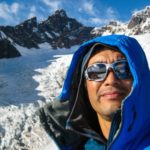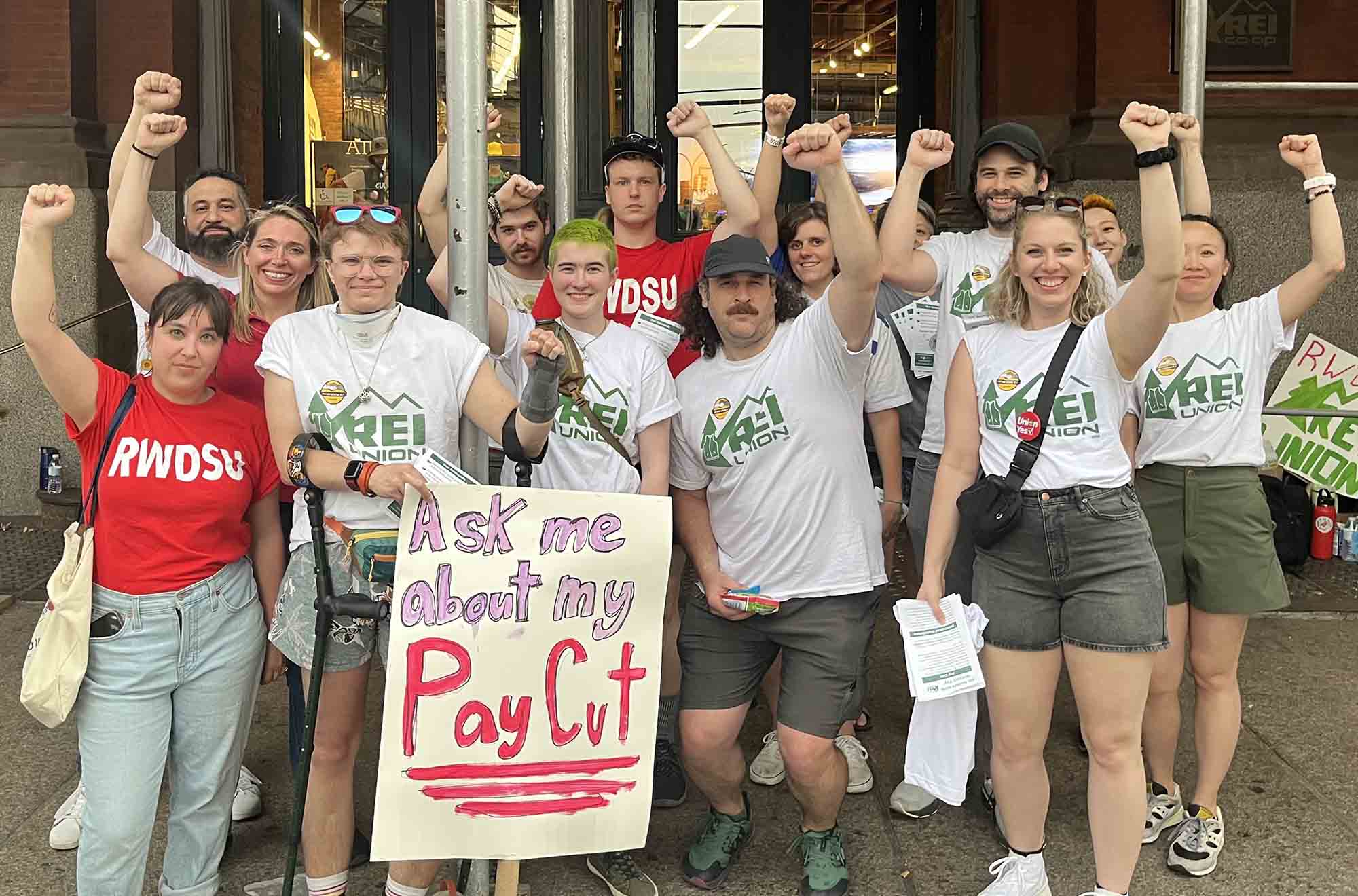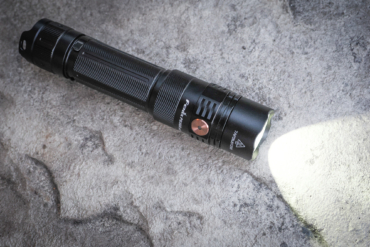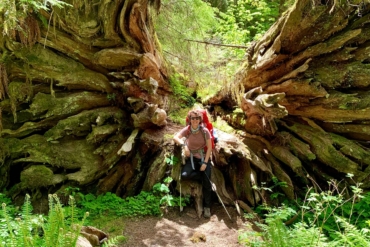In my worlds of outdoor and action sports, an inordinate number of friends and acquaintances have taken their lives. Although I would get sad upon hearing the news, it was never in the forefront of my thoughts. I counted the number of suicides in my circle a few times but always stopped counting at 10, not wanting to face the reality that my peer group was somehow an outlier.
Then while on vacation with my daughter this summer, I got another call. This time it was the person that introduced me to mountain biking in the ’80s. I wasn’t surprised, but I was distraught. Not only had I known this person the longest, but his impact on my life was also immeasurable.
I had to do something. I decided to share my similar struggles, without regard to repercussions, hoping that someone would connect with my story and PAUSE.
Help is available — Call 1-800-273-8255 to reach the National Suicide Prevention Lifeline 24 hours a day.
***
The officer stopped me before I sunk into the back of his patrol car. “I am not going to cuff you; you don’t seem like a threat.” It was a sliver of consolation during an unbelievable and overly intense tipping point. The sheriff’s department ushered me off to the hospital under suicide detention for the second time.
Commence the Decline
Up until 2018, my life had been an adventurist’s fairy tale. From Cub Scouts forward, I reveled in outdoor activities and never stopped. Through an incredible streak of industry acquaintances and friends, I pieced together a way to make a living, living.
By either training athletes or writing within cycling, climbing, dirt biking, camping, backpacking, and other outdoor endeavors, I assembled a career that provided for my wife, daughter, and the pack of animals I called family.

After a crowning ice climbing achievement in February of 2018, life started nudging me toward the gutter. I had never seriously injured myself, but I had a dirt bike accident during Memorial Day weekend due to a mechanic’s error. I tore my ACL along with almost everything else in my left knee, but the surgical prognosis was good, and I honestly wasn’t upset.
I had made it to 49 years old without significant surgery. In a way, I was looking forward to the 6 months of predicted downtime.

But fate had payback on her mind. And then some. The ACL reconstruction went off without a hitch, but after 2 weeks of unrelenting pain, the physical therapist voiced concern that something was amiss — and he was right.
I had a massive staph infection in my knee joint, requiring an emergency “cleanout” procedure. But still, I was mentally OK upon receiving the diagnosis, as I had “gotten away” with things for so long.
This excruciating procedure led to an 18-day stay in a rehabilitation hospital and an incredible volume of opioids. I don’t know how much of the constant stream of Dilaudid contributed, but I spontaneously cried and started having disturbing dreams during this time.
Every morning, looking out the window triggered immense sadness, even though my wife and daughter were there 24/7. I felt my identity and ability to earn income — and thus support my family — dwindle, just like the muscles of my left leg.
Get Up, Only to Get Knocked Down
After the extended hospital stay, I had very little mobility in my knee since the surgeon locked it straight for the duration due to a massive skin wound. I tried too hard to improve that aspect; I would force myself through incredible pain, willing my knee to bend to the point where I induced permanent damage. The surgeon was shocked that I could do such things to myself willingly.
But I trudged forward for months, making minimal gains. In September, the surgeon decided I needed a third procedure to remove scar tissue hindering flexion. The surgery obliterated the roadblock to functional improvements, and I returned to physical therapy, excited to move forward.
But just over a week later, I woke up to a massive spike in pain, and my knee swelled. I assumed I went too hard in therapy the day prior but called my surgeon just in case. My knee was hot to the touch; he instructed me to go to the emergency room immediately.
Logic pointed to another infection, but my heart didn’t comply. Even in the ER, when a nurse said, “It’s surely infected because it’s so hot,’” I didn’t believe it. They put me on IV antibiotics, and I eagerly awaited overnight lab results that would prove that I had pushed too hard in physical therapy again.



Ironically, I was transferred to the same hospital room I inhabited after the first cleanout procedure, serviced by the same staff. Room 508. The look of shock and disbelief that the nursing staff could not hide deflated my optimism. One staph infection has low odds; two consecutive infections didn’t fit the calculus for any of us, so I held on to the waning hope as hard as I could.
“OK, so prep him for a cleanout,” the nurse said into her phone. And I lost it. I screamed, “No!” loud enough to instigate multiple nurses rushing into my room. And I felt it. The bridge in my mind that connected hope and reality crumbled.
I was to stay in the room for at least a week. I had to endure two cleanout procedures and, upon release, I had to abide by a strict schedule of self-administered IV antibiotics for 6 weeks for the second time.
These 6 weeks of three IV infusions a day were mentally the most challenging part of the initial recovery, locking me in place both in location and time. I was a prisoner of the infection. The knowledge that I had to do it again was a dark cloud in my mind that refused to subside.
The Plunge
The day after my first cleanout surgery of the week, my phone lit up with several friends notifying me of their plans to visit the next day. I had been fortunate during my ordeal, as I was never without familiar company.
But this day would be remarkable, as so many were making the journey, some from far away. Maybe the visits would take the edge off the disbelief of a second infection. I went to bed looking forward to seeing friends, some of whom I hadn’t talked to in years.

A nurse would come in and ask me several “standard” questions revolving around suicide twice a day. I was “the hospital suicide risk,” according to statistics. My age, a profession that required athletic use of my leg, infections, long-term hospital stays, and the slow progress of physical therapy pointed toward an increased likelihood of suicide.
I also knew enough to understand the possibility that the infection could spread. I took the questioning seriously and answered with an honest “no” to all.
That night, I had a harrowing nightmare. I was older in my visions, with long gray hair, but I was still fit and strong. I had my alpine climbing gear on, strolling through an old European town, regaling in my successful summit.
But as I stepped off a cobblestone curb, my left knee hurt. And I knew. The staph infection had returned. I morphed into a mangy dog, looking for someplace to peacefully curl up and die.
I awoke and saw the various tubes and extension cords around my bed. I saw the crane in the ceiling used to move immobile patients. And I knew. I could end my life right then.
Terrified and crying uncontrollably, I awoke my wife, and she pointed at my then 5-year-old daughter and said, “She needs her father.” I eventually calmed down and fell asleep.
The charge nurse came in to ask the questions, and I recalled my nightmare and thoughts upon awakening. She thanked me for my honesty and strolled out of the room. I started to look forward to the visits of my friends, which would begin within an hour.
But suddenly and violently, multiple hospital staff members stormed into my room and began dismantling and removing almost everything in what seemed a panic. I was unable to process the situation.
The charge nurse entered the room with a pained look on her face and said, “Mr. Ishii, we put you on suicide detention. We removed anything in the room that you could use to harm yourself, and a staff member will always be within arm’s reach to prevent you from hurting yourself otherwise. I am sorry.”
My world caved in. My vision narrowed into an outwardly expanding cone. Anger and disbelief rendered me speechless and unable to move.
I was the last person I ever thought would be associated with the word “suicide,” although I felt I had an excessive number of suicides around me. I always knew that it wasn’t for me, and I never understood how so many of my friends and acquaintances had thoughts of ending what seemed to be exciting and joyous lives.
But here I was. It was just the beginning. And it was Suicide Prevention Week.
The Diagnosis
The hospital scheduled me for a psych evaluation. In a futuristic scene, a staffer rolled a medical robot into my room. It had a monitor and camera and would serve as the conduit between the psychologist and myself. Ironically, the “guard” assigned to be within arm’s length had to leave the room for HIPPA compliance, and the robot used an extension cord. If I wanted to kill myself, I could have done it right then.
After an hour of deep questions and brutally honest answers, the psychologist deemed I was not suicidal. I had suicidal ideation in the form of intrusive thoughts, which he opined was normal for a person in my situation. And he made this very clear: I was not suicidal because these intrusive thoughts were not in line with my conscious desires — a crucial distinction.
The doctor said, “You are the most candid patient I have evaluated in a long time, and I believe it will serve you well.” He didn’t require therapy, but he said it could help.
The Rise
I was finally released from the hospital after the second cleanout procedure for the week, making this stay 10 days. I started formal therapy for my mind and continued treatment for my leg. I made giant leaps in both areas.

My psychologist used EMDR (eye movement desensitization and reprocessing) therapy to identify childhood trauma quickly, and it connected to the way I approached and practiced competitive sports. The pain and fatigue of extended physical efforts distracted me from confronting and processing traumatic childhood memories. It is a coping mechanism that resulted in adulation, camaraderie, and rewards, so it was easy and “logical” to continue.
I finally stood up on my own and progressed to walking, which I had not done for 6 months. My leg, which looked like a bag of bones, grew and gained function weekly. I finally pedaled a bicycle and started spinning on a trainer, ending the longest streak without cycling in my life.
And throughout this time, I grew closer to my daughter, Sequoia, as I had to lay or sit most of the time indoors, allowing me to engage with her more than ever. Our bond became so much stronger than when I was always running around outdoors. She was my rock, and for the first time in my life, I understood familial love.
The Fall
I went to the 2019 Outdoor Retailer Summer Market, finally walking without assistance for long enough to work the show. When I drove home from the airport, I had an unexplainable bout of sadness triggered by a song played at my wedding. I cried silently on the last stretch of country highway, foreshadowing the events of the next day.
My wife asked me to meet her at a picnic table in the middle of the day outside our small-town public library. I was excited to see her during a workday. But as soon as I sat down, I felt the dark maw of unsaid feelings pouring out from her.
She was going to leave me. She wasn’t in love with me anymore; she wanted a divorce. And she was taking my daughter with her.
At first, I was angry. Angry that my wife dropped all this on me after all the pain and suffering of the last year. Mad that she was taking our daughter away from me after we had grown so close. And incredibly angry that she was giving up on me after 18 years of marriage and the vows we took as I was crawling out of the physical, mental, and emotional hole. She kicked me back to the bottom without a glance at the “new” me.
She asked me to leave. I spent a few weeks in my van, moving from driveway to parking lot, trying to work and keep my financial obligations met. It was depressing to live in an urban environment after living in the country for over a decade. And it was challenging for me to work without access to my home office or shop. And the most painful reality was I rarely saw my child.
After managing irregular visits to access the things at home required to do my job, my wife decided to leave, severing my limited contact with my daughter. My wife did not offer a regular visitation schedule and displayed zero sympathies. I descended into extreme anger.
The house in the woods that was always busy became silent. My wife refused to talk to me, stating she needed space. But all I wanted was to know when I would see my daughter. One night, after an argument, something I said triggered her to call a climbing partner and friend, and she requested that he call me. I do not recall the resulting conversation.
Rock Bottom
After the call, I engaged the automatic mode of packing the van to leave when I don’t know what else to do. It was a hot and muggy summer night, and I was wearing only board shorts and flip-flops. I heard gravel crunching under too many tires.
Three squad cars rolled down my steep driveway, parked to block my van, searchlights blinding me. Voices told me to keep my hands visible and to lie down. I was unable to comprehend the situation and was incredulous at the criminal treatment.

I yelled into the light, “Do you guys realize I’m 51 years old and almost naked?” And surprisingly, this caused the three officers to stand down a bit, turn off the spotlights, and allow me to get up. They told me that my friend called the local sheriff, fearing that I would take my life and that he wouldn’t get to me in time, living an hour away. They also said they knew I had a gun on site.
They informed me they were following standard protocol and asked questions like the ones at the hospital, and I answered with equal honesty. They asked me one question twice — how I would kill myself if I wanted to do it. The details in my answer were too much for someone consulting via radio.
An officer informed me that I was under suicide detention, and he had to handcuff me and bring me to the hospital. And notably, he apologized.
This time, I wasn’t mad. I was sad. Sad at how my life had eroded to nothing. I had it all — a job I loved, a family, a home. And it was seemingly dissolving through a series of events that I didn’t control.
They escorted me through my home to let my dog out, get my ID, and lock up, with one officer always in control of my shoulder. They told me to prepare my pets, as it was unknown when I would return.
An officer kindly told me that I must lead an exciting life based on what he saw in the house. I could feel his heartfelt concern. As we walked back out to the squawk of police radios, he turned me around, looked me straight in the eyes, and said, “Let’s get you better so you can go back to your incredible life.”
The transporting officer spared me the handcuffing, and I was admitted to the same hospital. The police remained with me until I was in a private room with a guard. Once again, I was awaiting a psych evaluation.
My wife, obviously angry, arrived, as did my climbing friend. The psychology staff pulled my wife aside to ask her questions in private, and my friend warned me that she was furious, angrier with me than he could have ever imagined.
Finally, at 2 a.m., I got the medical robot psych evaluation with the same results. I was not suicidal. I suffered from intrusive thoughts not connected to my conscious desires. But this time, I got a diagnosis that connected all the dots.
I was diagnosed with “bad” PTSD, some from my childhood, some from my competitive sports background, some from the motorcycle accident, subsequent surgeries, and associated pain. I thought PTSD was reserved for military personnel and felt somewhat embarrassed that I “let” it get me. But a veteran told me, “I joined the armed services fully aware that I could get PTSD; it was a conscious decision. You didn’t ask for it.”
My friend drove me home just before the sun rose. When he left my house, it was the loneliest I had ever felt — an empty home, after overnight suicide detention, with an angry, separated wife, and no idea when I would see my child. I didn’t cry. I just sat in the house, trying to regain enough composure to do anything with my challenged body and troubled mind.
The Final Blow
On the day before Thanksgiving 2019, opposing counsel served divorce papers, listing 3 hours a week with my daughter. I had to sit on all of this until the following Monday, a cruel blow of legal strategy.
The financial burdens proliferated. I was paying all the home bills alone, and I started child support payments. The legal bills accrued, and my portion of the medical bills started filling the mailbox. And my income largely hinged on my ability to pursue outdoor sports.
My ability to be a father was under attack; opposing counsel claimed I was reckless, unstable, and a risk to my child. My home, the only home my daughter knows, was at stake. The impending division of assets, divorce laws in Texas, combined with the solitary and now unstable source of income, threatened a forced sale.

Things felt out of control, unmanageable circumstances pulling me to the bottom of the drain. So, I concentrated on what I could control, and one of those things was mental therapy.
Talk and EMDR therapy opened my eyes. My parents, both national-caliber athletes and immigrants, seemingly valued my existence on performance. In school and sports, second place was the first loser.
They never touched me, never told me they loved me, never expressed that they were ever proud of me for anything. I feared dinnertime as it often started with, “You know what your problem is …,” leading to an hour of drunken beratement and a loss of appetite.
And for 40 years, this was fuel. From sixth-grade baseball and basketball to bicycle racing in college, I was out to bury anyone that received any adulation or support from their parents. If I saw a parent hug their child when they got picked up from practice, that kid was a target. Double down if I heard, “I’m proud of you.”
The embers of anger inside drove incredible feats of work capacity. Every morning when my feet hit the ground, I launched a mission to prove my parents wrong. I financed and graduated from college on my own, managing a restaurant while simultaneously fulfilling bicycle racing commitments.
The fire could rage, driving incredible feats of endurance, eclipsing genetic and physiological limits, puzzling the researchers at the Human Performance Lab at the University of Texas at Austin.
I pushed so hard on the bicycle that I cracked several teeth in my lower jaw from gritting them during extended bouts of self-induced agony. I would go so hard in strength-oriented efforts that I would dislocate joints from the force produced alone.
I predictively gave myself frostbite to finish an objective that meant nothing, just to prove to nobody that I wouldn’t quit. And I knowingly blew a disc out in my back in a similar show of defiance.
And all of this was wrong, so wrong. It removed so much of the joy in sports I truly loved. But it did produce results. My psychologist warned me that my drive and performance could falter as I progressed, but the joy could return.
Reconciliation
So, where am I today, and what is the point of this long-winded narrative?
I am 3 years and 11 medical procedures out from injuring my knee. Including a wrist reconstruction from damage suffered in the same accident that I didn’t know about until I started climbing again — hundreds of physical therapy sessions and an equal number of sessions at home.
My knee and wrist will never be the same, but I have accepted the limitations and welcome the challenge of working around them. I continue mental therapy, both with a professional and on my own.
Almost 2 years from getting served divorce papers and 18 months of legal battle, including two court appearances, custody is settled. My ex-wife demanded a forensic psych evaluation, usually reserved for criminal offenders, and the results were as expected.
I was fit to be a father and always was. I was awarded the best custody arrangement a father in Texas can get, outside of abnormal legal efforts.
I have a daunting amount of legal debt. But the house was awarded to me, all assets are split, and the only remaining hurdle is to refinance the home on my own, which proves to be challenging, but I’m hopeful for a positive result any day.
I am back to doing all my sports: climbing, cycling, dirt biking, and training for all of it. I would rate my capacity at 70% before the injuries, and I understand stress hindered and still delays physical progress.
And I am a different person. I ride my bicycle and feel the simple joy of the effort and activity. I love cycling again, and it has nothing to do with performance. Rarely do I rock climb outside with a grade objective. And my desire for athletic pursuits has nothing to do with proving anything to anyone — and everything to do with doing cool things outside with my friends.
There is no anger involved, no revenge, zero negativity. I appreciate the freedom and ability to exert myself in a healthy way, even if nobody knows.
And most importantly, I exercise kindness for myself and others in a way I’ve never experienced.
The suicidal intrusive thoughts are rare and no longer alarming. I understand that they are not associated with my desire to live. And if I cry, it is almost always from the humbling gratitude of assistance thrown upon me throughout this 3-year ordeal, including this job.
I share all this not for sympathy or admiration. I hope that my story resonates with at least one reader. Maybe their situation isn’t as bad, or perhaps it’s much worse. But I want to share an example of perseverance and hope. And that there is an end to the suffering and darkness that doesn’t involve taking a life.
I understand the dread, the inability to see a solution other than to stop the movie. And I, too, lost hope and the broad field of view that would reveal that I did matter. To more people than I could have imagined. And that those people would help in any way they could. Because they are friends, and they are human.
In the depths of despair, it is difficult to operate from anything other than emotion. But if you zoom out, you can see that the intrusive suicidal ideation doesn’t necessarily align with your true desires. And that people do care, immensely. And that this is temporary, it will pass, and solutions exist.
I only know what I know. And from my experience, the one thing I would tell anyone with suicidal ideation is to call someone: a friend, a family member.
And push your ego aside and be open and honest. Admitting your depression, fears, and irrational thinking is not weak — it is the opposite; it is strength. More strength than most will ever muster.
Please. JUST PAUSE.

Note: I would like to thank the village of people who helped me get through the last 3 years. From visiting me in the hospitals, driving an hour to where I live to deliver food, and babysitting me so my family at the time could leave and do something other than care for me. Some friends donated money to retain a lawyer, and, remarkably, someone trained my clients and let me keep most of the money to make my mortgage payments. I am tearing up just typing this.
If you need help, let it be known — and you will find that the human spirit wants to thrive.
National Suicide Prevention Hotline: Call 1-800-273-8255.








